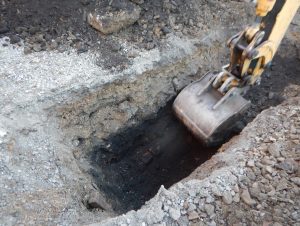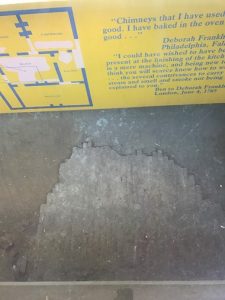By: Genevieve Everett
Before graduate school I asked friends that had been through graduate programs for some advice, and again and again I was warned that it would fly by fast. They weren’t wrong. Here I am, deep into my final semester of graduate school wondering what happened to the time. I guess it’s true, time flies when you’re having fun….or when you’re really stressed out.
One of the most stressful courses I signed up for in this program was the “Applied Spatial Methods in Archaeology” class. This class consisted of learning/using ArcGIS to create viewsheds, data dictionaries, etc., out of archaeological data. I had never used GIS, and I am not the most technologically savvy person out there, so I knew going into this class that I would be out of my comfort zone. I got passing grades in the class, but there were very few moments where I felt fully confident using ArcGIS. It was frustrating, and I hated asking my classmates for help, because we all have our own stresses to deal with. Looking back, I was so thankful that I took the class, because it has been immensely useful since.
This past summer working for PennDOT as a PHAST intern I used ArcGIS all the time to georeference historic maps, historic aerials, engineering plans, and to draw in project area boundaries, which I converted into maps for reports. One of my favorite uses of GIS is creating an AOI in Web Soil Survey, which creates a shapefile showing the soil(s) in the project area. First you upload the project area boundary into Web Soil Survey, which displays the project area boundary (in the real world coordinates that you set in ArcGIS), and the soils present within it. You then download the shapefile associated with the AOI, and bring it into ArcGIS. I created a fake project boundary to show what the end product looks like. In this example there are two soils present, 14B and 214A, which have unique names. For example, 14B, which makes up 98% of this fake project boundary is called Sheepscot. Sheepscot is a cobbly very fine sandly loam. Web Soil Survey also provides information about elevation, slope, farmland classification, typical stratigraphic profile information, and parent material. All of this information comes in handy when writing technical reports.
Another reason I am really glad I took that class is that I have been using ArcGIS heavily for my thesis. Part of my thesis is conducting a spatial analysis of lithics and lithic raw material from a Paleoindian site in New Hampshire, in comparison to another site nearby. By extension, I am attempting to determine what type of activity or activities were being carried out in this area. With the help of Dr. Chadwick, classmates, past theses, and my own problem solving (mostly through the ESRI website), I have made a lot of progress and learned a few new things. One of those things was creating a “fishnet” to create the excavation block grid out of two datum points, because there is no GPS data. Most recently I taught myself how to create Choropleth maps. Choropleth maps display where individual or multiple artifacts are in relation to one another in the excavation block using color gradients. As you can see in the image, each color is correlated with a particular number of Waste Flakes, and the quadrants for which they were found. For example, the red quadrants in the “Total Waste Flakes K-Block” image are the quadrants that have a higher count of waste flakes (90-176). I am also looking at the distribution of artifacts by Zone (or Strat), which are easily displayed in these Choropleth maps for comparison (shown below). My next step is to take these Choropleth maps, and do hot spot/cluster analysis.
The moral of the story? Try something new, even if it scares you. It’s cliché, but you’ll never know if you don’t try.












